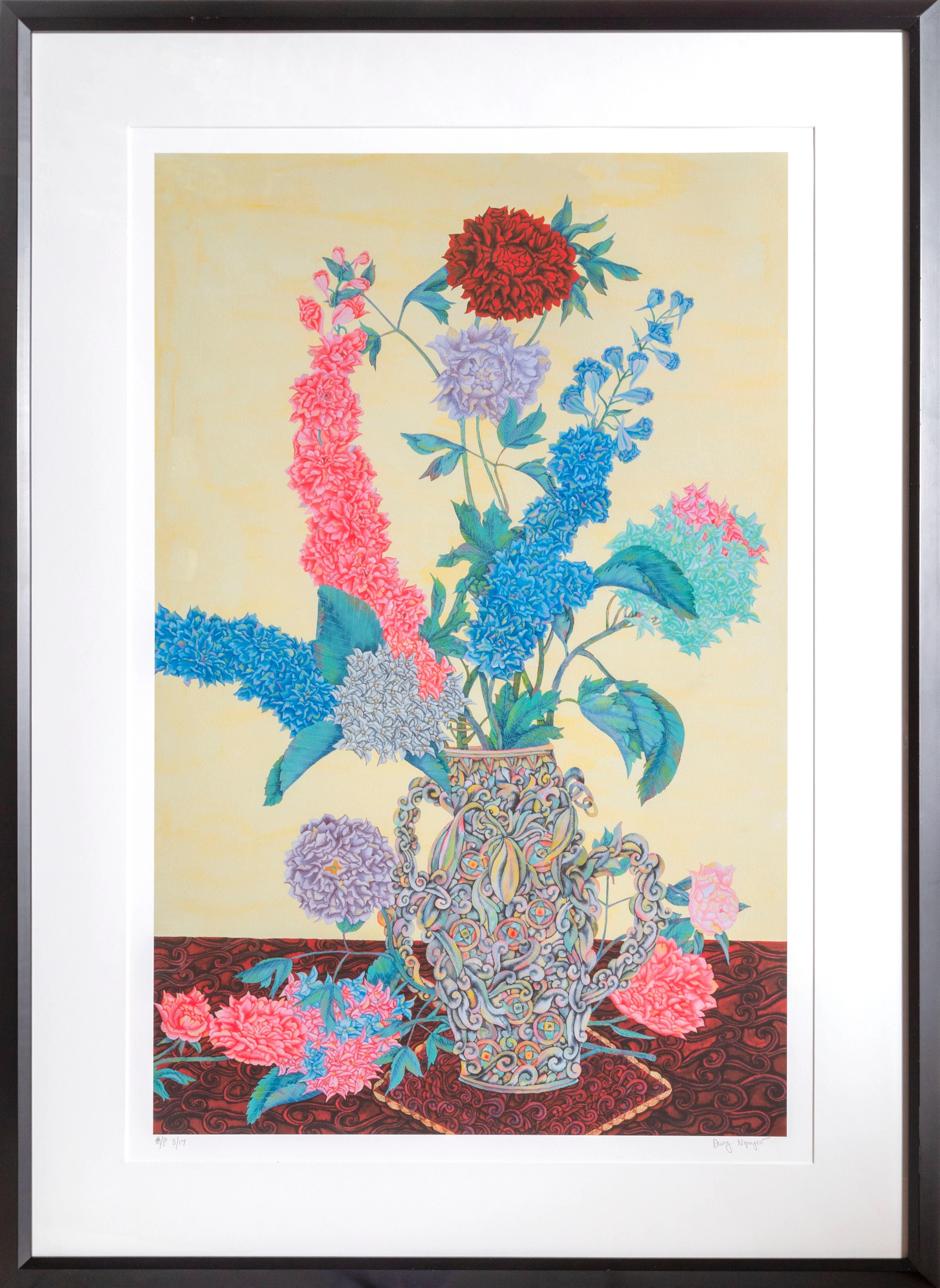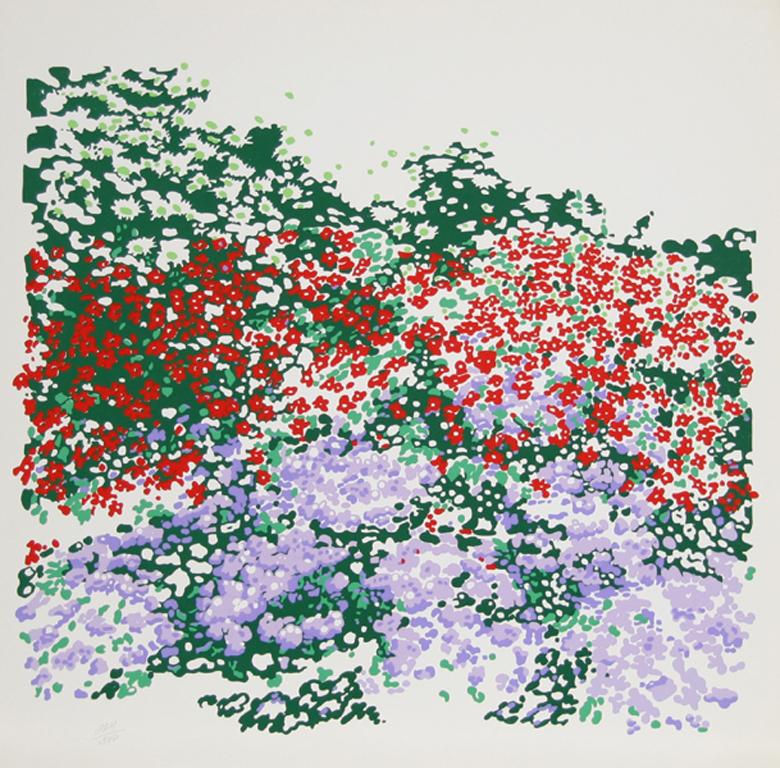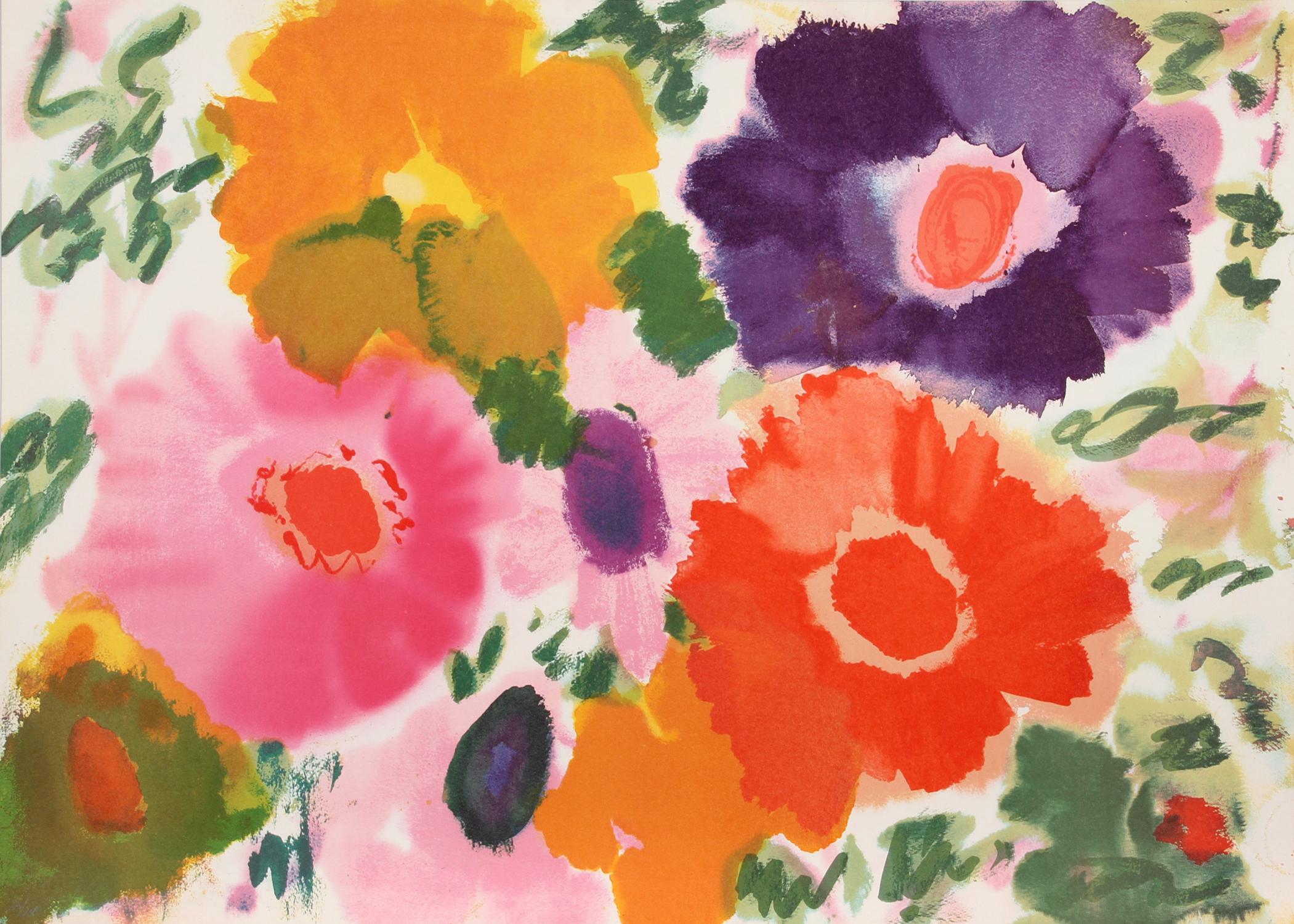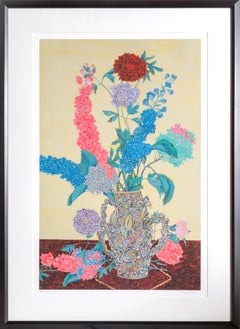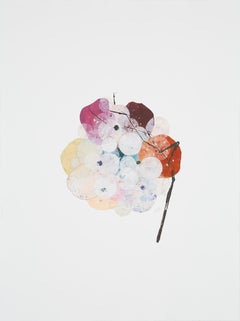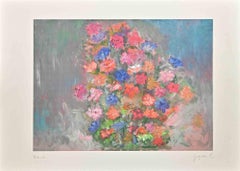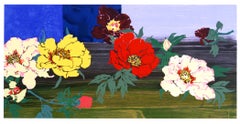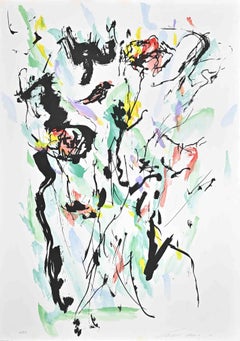Items Similar to Flowers 18, Colorful Abstract Lithograph by David Nguyen
Want more images or videos?
Request additional images or videos from the seller
1 of 5
David NguyenFlowers 18, Colorful Abstract Lithograph by David Nguyen2008
2008
$1,200
£930.16
€1,057.96
CA$1,719.78
A$1,885.69
CHF 985.79
MX$22,584.76
NOK 12,435.47
SEK 11,664.48
DKK 7,903.61
About the Item
David Nguyen, Vietnamese (1977)
Date: 2008
Lithograph, Signed and Numbered in Pencil
Edition of AP 18
Image: 20 x 24 inches
Size: 24 in. x 30 in. (60.96 cm x 76.2 cm)
- Creator:David Nguyen (1977)
- Creation Year:2008
- Dimensions:Height: 24 in (60.96 cm)Width: 30 in (76.2 cm)
- Medium:
- Movement & Style:
- Period:
- Framing:Framing Options Available
- Condition:
- Gallery Location:Long Island City, NY
- Reference Number:Seller: RO401781stDibs: LU4665665322
About the Seller
4.9
Platinum Seller
Premium sellers with a 4.7+ rating and 24-hour response times
Established in 1979
1stDibs seller since 2014
3,158 sales on 1stDibs
Typical response time: 1 hour
- ShippingRetrieving quote...Shipping from: Long Island City, NY
- Return Policy
Authenticity Guarantee
In the unlikely event there’s an issue with an item’s authenticity, contact us within 1 year for a full refund. DetailsMoney-Back Guarantee
If your item is not as described, is damaged in transit, or does not arrive, contact us within 7 days for a full refund. Details24-Hour Cancellation
You have a 24-hour grace period in which to reconsider your purchase, with no questions asked.Vetted Professional Sellers
Our world-class sellers must adhere to strict standards for service and quality, maintaining the integrity of our listings.Price-Match Guarantee
If you find that a seller listed the same item for a lower price elsewhere, we’ll match it.Trusted Global Delivery
Our best-in-class carrier network provides specialized shipping options worldwide, including custom delivery.More From This Seller
View AllFlowers II, Signed Floral Lithograph by Helen Covensky
By Helen Covensky
Located in Long Island City, NY
Flowers II by Helen Covensky, Polish/American (1925–2007)
Date: 1980
Lithograph, signed and numbered in pencil
Edition of 225
Image Size: 18.5 x 26 inches
Size: 22 in. x 29 in. (55.8...
Category
1980s Abstract More Prints
Materials
Lithograph
Flowers Fifteen, Framed Lithograph by David Nguyen
By David Nguyen
Located in Long Island City, NY
Artist: David Nguyen, Vietnamese, (1977- )
Title: Flowers Fifteen
Year: 2008
Medium: Lithograph, Signed and Numbered in Pencil
Edition: AP 3/17
Size: 36 x 24 inches
Frame Size: 41 ...
Category
Early 2000s Contemporary Still-life Prints
Materials
Lithograph
Flowers IV, Lithograph by Helen Covensky
By Helen Covensky
Located in Long Island City, NY
Flowers IV
Helen Covensky, Polish/American (1925–2007)
Date: 1980
Lithograph, signed and numbered in pencil
Edition of 225
Image Size: 18 x 26 inches
Si...
Category
1970s Contemporary Figurative Prints
Materials
Lithograph
Spring's Passion, Signed Floral Lithograph by Helen Covensky
By Helen Covensky
Located in Long Island City, NY
Spring’s Passion by Helen Covensky, Polish/American (1925–2007)
Date: 1980
Lithograph, signed and numbered in pencil
Edition of 225
Image Size: 18.5 x 27 inches
Size: 22 in. x 29 in....
Category
1980s Abstract More Prints
Materials
Lithograph
Flower Field, Silkscreen by Nadine Prado
By Nadine Prado
Located in Long Island City, NY
Flower Field 4
Nadine Prado, Mexican/French (1940)
Date: 1979
Screenprint, Signed and numbered in Pencil
Edition of 300
Size: 32 x 32 in. (81.28 x 81.28 cm)
Category
1970s Contemporary Still-life Prints
Materials
Screen
Flowers V, Lithograph by Helen Covensky
By Helen Covensky
Located in Long Island City, NY
Flowers V
Helen Covensky, Polish/American (1925–2007)
Date: circa 1978
Lithograph on Arches, signed and numbered in pencil
Edition of 250
Size: 23.5 in....
Category
1970s Contemporary Figurative Prints
Materials
Lithograph
You May Also Like
Gathered (floral, still life, watercolor, bright colors, flowers)
Located in New York, NY
Monotype
32 x 25 inches framed
Category
2010s Contemporary Abstract Prints
Materials
Monotype
$3,000 Sale Price
20% Off
Flowers - Digigrapgh by Martine Goeyens - Late 20th Century
By Martine Goeyens
Located in Roma, IT
Flowers is a very colorful artwork realized by Martine Goyens in the late 20th Century.
Digigraph print.
Hand-signed.
Good conditions.
The artwork id depicted through confident s...
Category
1990s Contemporary Figurative Prints
Materials
Digital
Linwood (Flowers)
By Robert Kushner
Located in New York, NY
This edition was commissioned in 1997 to celebrate 'Lincoln Center Festival'. The edition of 108 is signed and numbered in graphite by the artist. This print comes directly from the publisher, Lincoln Center Editions...
Category
1990s Contemporary Still-life Prints
Materials
Screen
Flowers - Lithograph by Ernesto Treccani - 1973
By Ernesto Treccani
Located in Roma, IT
Flowers is an Original Lithograph realized by Ernesto Treccani in 1973.
Limited edition of 125 copies, editor "La Nuova Foglio SPA".
Very good condition on a white cardboard.
Hand...
Category
1970s Modern Abstract Prints
Materials
Lithograph
Lady with Flowers /// Pop Art Walasse Ting Colorful Girl Abstract Lithograph Art
By Walasse Ting
Located in Saint Augustine, FL
Artist: Walasse Ting (Chinese-American, 1929-2010)
Title: "Lady with Flowers"
*Signed and numbered by Ting in pencil lower left
Year: 1979
Medium: Or...
Category
1970s Pop Art Figurative Prints
Materials
Lithograph
Flowers- Lithograph by Ernesto Treccani - 1973
By Ernesto Treccani
Located in Roma, IT
Flowers is an Original Lithograph realized by Ernesto Treccani in 1973.
Limited edition of 125 copies, editor "La Nuova Foglio SPA".
Very good condition on a white cardboard.
Hand...
Category
1970s Abstract Figurative Prints
Materials
Lithograph
More Ways To Browse
Marcelo Martin Burgos
Masson Painter
Mid Century Walking Man Sculpture
Nightmare Before Christmas
Oil Paintings Of Deer
Orlinski Kong Sculpture
Painter Augustus
Pearl Royale
Peter Clay
Picasso Head Sculpture
Polo Pony
Portrait Handsome Man
Red Fox Oil Paintings
Ruan Hoffmann
Santa Fe Bronze
Sculpture Cake
Sculpture Pop Art Candy
Smith Brothers
